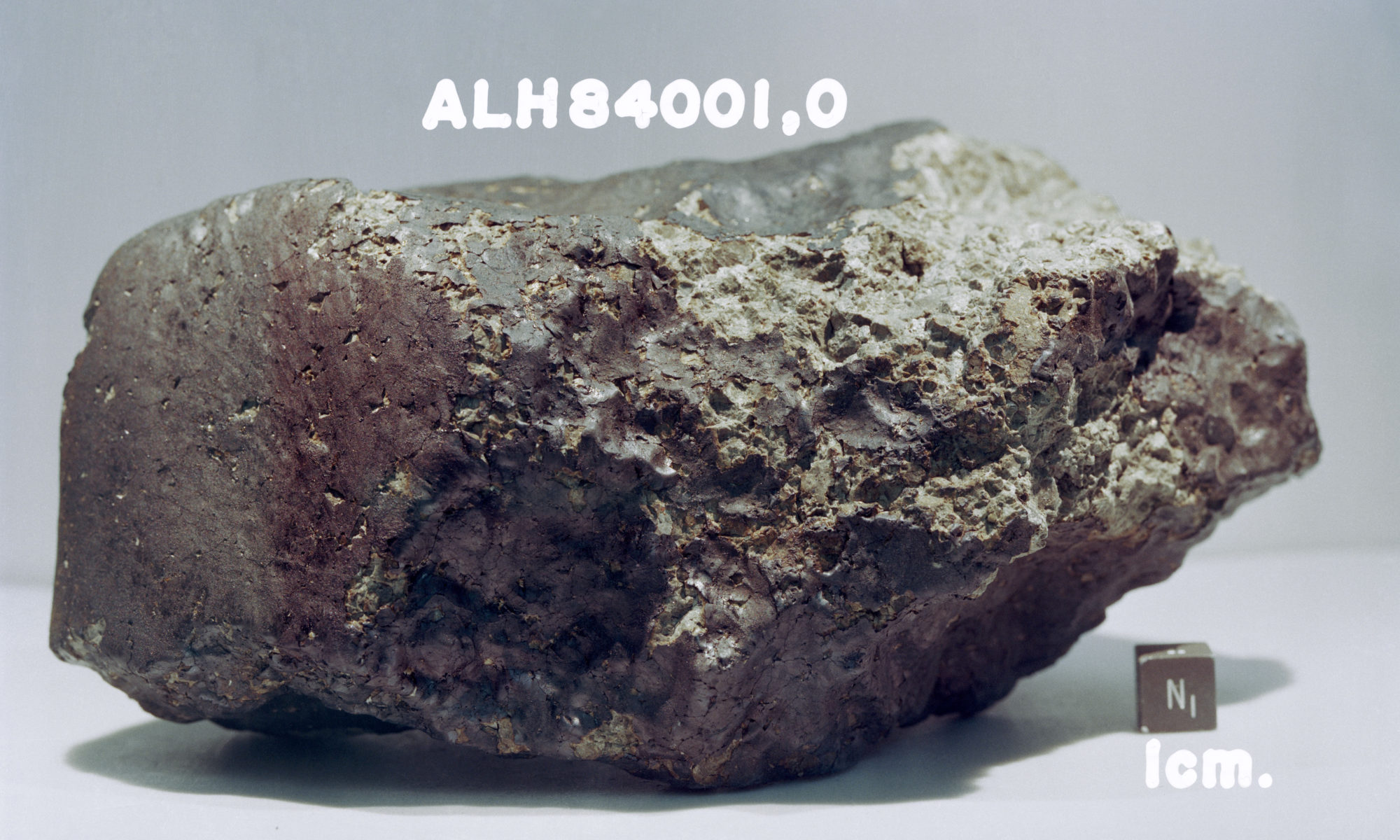Paper: Organic synthesis associated with serpentinization and carbonation on early Mars
Authors: Steele A, Benning LG, Wirth R, Schreiber A, Araki T, McCubbin FM, Fries MD, Nittler LR, Wang J, Hallis LJ, and Conrad PG.
The discovery of organic carbon in Martian meteorites has fueled scientific debates for more than four decades. Could these molecules be the chemical residue of Martian life?
In a report published last month, researchers studying a particularly ancient Martian meteorite – estimated to be ~4 billion years old – suggest that the organic carbon molecules they discovered inside were formed purely by chemical reactions. Although no Martian life was found, these results have provided a window into the spectacular chemistry that Mars has been cooking up since antiquity and give researchers a rare look at what early Earth may have looked like too.
Meteorites are the golden goose of planetary science. Although orbiters, landers, and rovers undeniably provide a wealth of information about the planet they observe, they can only carry small, light-weight instruments, which limits the science they can conduct. But meteorites offer researchers the unique opportunity to inspect extraterrestrial materials up-close, with all the power of the most sophisticated instruments on Earth at their disposal. Of course, the Mars Sample Return program will also deliver Martian material directly to the eager hands of researchers, but that future is several years away. In the meantime, we have meteorites.
The Allan Hills 84001 meteorite is one of the largest and also most well-known meteorites from Mars. That’s because it sparked quite the controversy several years ago. Some of the first analyses of the rock, made in the 90’s, suggested that the organic carbon molecules nestled amongst the meteorite’s mineral grains were sourced directly from nano-fossils preserved inside. At the time, the investigation was state of the art. But our understanding of microorganisms and their processes of fossilization was incomplete in the early 90’s. Subsequent work revealed that the conclusions of life were premature and that the nano-fossils were in fact mineralogical artifacts. The true origin of the organic carbon molecules, however, remained uncertain.
It is important to note here that “organic carbon” can be a misleading term. The initial classification of organic and inorganic molecules was defined centuries ago, when scientists theorized that living organisms were embodied by a unique vital force that made them fundamentally different from non-living things. Thus, these early chemists categorized the chemical compounds of living organisms as “organic” and the compounds of nonliving things as “inorganic”.
We have since learned that living things share many chemical compounds with their inanimate counterparts. Organic molecules have been redefined to refer more broadly to molecules primarily made of carbon and hydrogen. And while it is true that all life is made of organic molecules, not all organic molecules are made by life.
Indeed, compelling new results from Dr. Andrew Steele and his team indicate that the organic carbon in the Allan Hills 84001 meteorite was not made by life. The researchers used extraordinarily precise and high-resolution techniques – often investigating features 100 times smaller than the width of a human hair – to make their discovery.
Zooming into the meteorite at this scale revealed that the organic molecules were systematically found in the same place as certain minerals that are produced by well-known chemical reactions. These reactions, namely serpentinization and carbonation, occur when water percolates through a rock and reacts with the constituent minerals, altering their composition and generating organic molecules as by-products. Therefore, the researchers could easily explain the presence of organic carbon without needing to invoke the existence of any Martians.
Although no definitive signs of life were reported, these results advance the field of astrobiology. They show direct evidence that Mars has been an active chemical melting pot for billions of years, stewing up organic carbon all on its own and providing nutrients for any potential life on Mars.
The results also act as reference data – showing scientists a pristine example of what non-biological organic carbon looks like on Mars, which will be an exceptionally important point of comparison if we ever do find organic carbon we suspect may be biological.
And lastly, these results have allowed us to peek at the types of chemical reactions possible on rocky planets over 4 billion years ago. The scientific significance of this cannot be understated, particularly since any evidence of these early stages of organic chemical evolution have been lost from Earth’s geologic record due to plate tectonics. Mars, which lacks plate tectonics and therefore has preserved some of its most ancient rocks, is perhaps our only hope of understanding what chemistry was occurring on our own pre-biological world.
Mars exploration is not just asking the question “are we alone?”, it is also seeking an answer to the question “how did we come to be?”. These new results are a step towards finding an answer to both by shedding much needed light on how chemistry could transition to biology on Earth, and maybe Mars too.
Martian Past Revealed by New Analysis of 4 Billion-year-old Meteorite by Erin Gibbons is licensed under a Creative Commons Attribution 4.0 International License.

